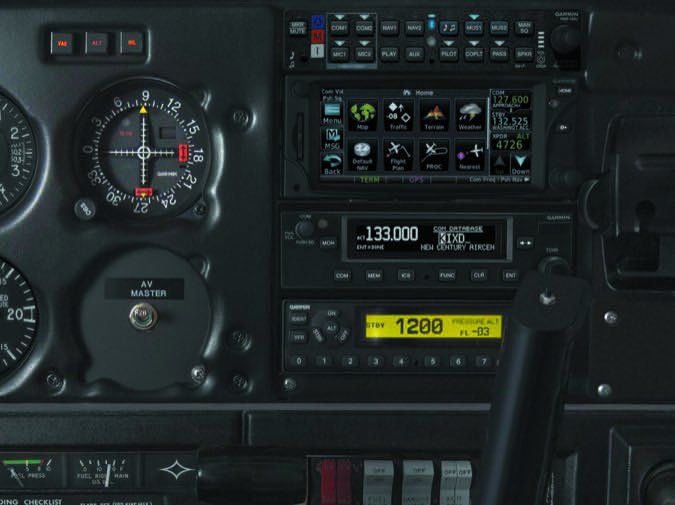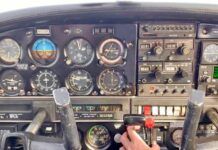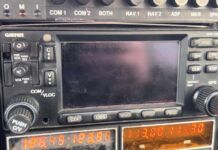On the verge of extinction nearly 10 years ago, the standalone navcomm radio barely soldiers on today. While there are few choices for new ones (there’s a much larger market for standalone comm radios), a navcomm installation could make sense for basic panels and for advanced ones to back up a GPS.
Hang on to your wallet. If the panel hasn’t seen a radio upgrade in a while, you could shell out more money than you anticipated to upgrade the antenna system and gut out old wiring.
In this upgrade guide, we’ll scan the VHF radio market and first talk a bit about upgrade strategies.
Buy What You Need
Before diving into a navcomm installation, consider how you fly. If you haven’t dialed in a VOR frequency or flown an ILS approach in years, you probably don’t need a full-up navcomm. For VFR missions, tablet navigation apps and portable GPS navigators might be good enough to skip ground-based navaids altogether.
But even for light IFR, you mightwant two comm radios and will need one navigation radio with approach capability, including glideslope.
Another upgrade scenario might be a well-equipped panel flown IFR with a modern primary system (maybe a Garmin GNS, GTN or Avidyne IFD navigator), which has a secondary navcomm that’s on the fritz. Maybe it’s an old Narco or King KX170B. Here you’ll need to decide if replacing it with a modern comm radio is all you really need.
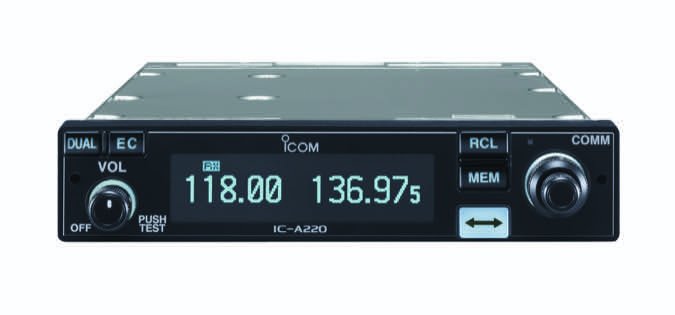
Save some money and shop the used equipment market. There are plenty to choose from, but knowing what’s compatible is key. You’ll want to solicit help from a trusted shop because radios come in different voltages and various versions that might not have a glideslope receiver, audio amplifier or the circuitry to properly work with the existing OBS indicator. This is true of the venerable BendixKing KX155 series—a popular used-market seller that falls in the $3000 price range for a newer model that’s been we’ll cared for. As we’ll point out, a single bench repair can add $1500 to the investment.
Maybe a WAAS GPS installation is the better choice and more so if an ADS-B upgrade is done at the same time. If you’ve priced an ultramodern navcomm installation like Garmin’s GNC255, you’ll know the price can soar above $6000. For that buy-in, it could make sense to consider a used Garmin GNS430W. It will cost more, but the ability to fly GPS approaches is generally worth the price delta, plus it’s an approved position source for interfacing with an ADS-B Out system. We’ve heard from buyers who scored decent ones for a $7000 investment, after install.

If you determine that a standalone navcomm (or comm transceiver) fits your flying and budget, you’ll need to determine if it fits the existing stack without pricey rework. There are plenty of options for avoiding that. Here’s a rundown of the latest gear.
Garmin
The two transceivers in Garmin’s lineup are the $1995 GTR225 and $4495 GNC255, which has a VOR, localizer and glideslope receiver. The internal comm and nav boards trickle down from Garmin GTN-series navigators. We like that the radios have chassis-mounted cooling fans, USB ports on the bezel and are available with 16-watt transmitters (10 watts is standard) for high-flying applications. This higher power spec is common in the jet world where talking longer distances is a requirement.
You won’t find touchscreen on these radios. Instead, they use traditional buttons and knobs that have a rugged feel. The volume control, squelch control and navigation radio IDENT control layout and functionality is carried over from Garmin’s old GNS430 and 530 navigators. Both radios are the same size, measuring 1.65 inches high by 6.25 inches wide by 10.4 inches deep.
Garmin built some smart tech into the radios, starting with an internal frequency database (airport and VOR frequencies) that’s loaded through the bezel USB port. You can search the database by airport identifier just like you do with a GPS navigator, and since the radios accept GPS position through a serial data connection, the radio shows distance, speed and time to the station. For ground-based navigation duties, the GNC255 has an onscreen CDI.
As we would expect in a modern radio (and carried over from the SL30 and SL40 radios they replaced) the GNC and GTR radios allow you to monitor the audio of the standby frequency without having to tune off channel. Contact www.garmin.com.
PS Engineering’s Integrated PAR200A
A couple of years ago, PS Engineering teamed with U.K.-based Trig Avionics and designed the PAR200A. On the surface, this is a signature PS Engineering audio control system, IntelliVox four-seat intercom and wireless cabin entertainment controller. Smartly, PS Engineering also included comm radio control in the feature set. It doesn’t manufacture the VHF radio; the PAR200A connects with Trig’s TY91 remote transceiver through an RS-232 serial data interface. Frequency tuning and radio control is done directly on the audio panel’s backlit LCD display.
Since it’s a two-piece system (it’s actually three systems in one, if you count the intercom) and requires audio jack wiring throughout the cabin, plan on a sizable installation. The remote radio is 5.5 inches long and 1.7 inches high, the right size for mounting in an avionics bay or behind the instrument panel. But combining all of the audio functions in a single control head makes it a worthy option if you want a simple and uncluttered radio stack.
While integrated, there’s at least some failsafe built in with redundant power inputs to the VHF radio and audio panel. Standard features include Bluetooth connectivity, a duplex telephone interface that generates a ringtone for incoming calls, a five-frequency comm radio storage and memory bank, plus unswitched audio inputs for connecting attention-getting aural alerts.
We found the PAR200A’s feature set intuitive and easy to navigate, which is the way a comm radio and audio panel has to be. Saying that, there is a lot to the user interface, but the features you use most—like changing comm frequencies—are kept simple. Tuning the radio is done with dedicated channeling knobs on the right side of the bezel. Tune it in the standby side and push the outer button to transfer it to the active window.
Select which VHF audio you want to listen to (and which radio you want to transmit on) with selector keys to the left of the display. The audio panel can accommodate two comms and two nav radios, although Trig doesn’t make a VHF nav receiver; the system takes audio input from an existing standalone radio.
The intercom is full functioned and includes many of the features PS Engineering builds into its flagship audio panels, including entertainment input with custom muting control, allowing you to set when and how the entertainment audio mutes. There’s also a music volume control.
The PAR200A is priced at $2995 with the TY91L and installation kit. The base system has a 6-watt VHF transmitter (this isn’t a powerhouse), and the $5095 version has the high-powered (16 watts) TY91H. Contact www.ps-engineering.com.
Trig Avionics
If you already have an audio panel, Trig sells the TY series with a space-saving miniature control head. It fits in a standard 2.25-inch instrument cutout or any area on the panel that can accommodate the 2.4-inch-wide by 1.8-inch-high chassis assembly. Total system weight is roughly one pound. The controller only occupies roughly three inches behind the panel, which offers flexible mounting options, especially for backup.
For stack mounting, the 10-watt TY96 comm transceiver stands 1.3 inches high, has a two-place stereo intercom with auxiliary inputs for aural alerts, a built-in playback recorder for listening to the last transmission and Trig’s “push step” function, which speeds frequency tuning.
The TY96 can interface with Garmin GPS navigators to display frequencies based on position, plus there is an internal airport database (CSV files are loaded through a bezel-mounted USB port) capable of storing 200 frequencies and identifiers.
The TY97 is a version with a 16-watt comm transmitter. The TY96 is street priced at $1998 and the higher-powered TY97 is $2699. Contact www.trig-avionics.com.
ICOM IC-A220
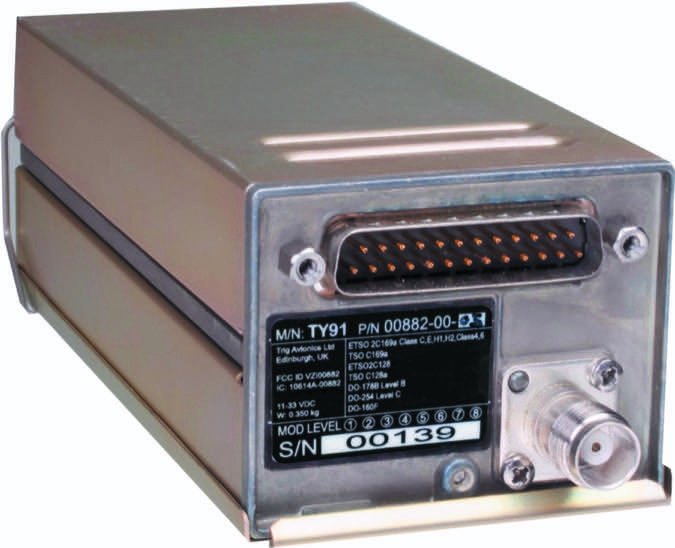
You might recognize the Icom name from the amateur radio market and from its long-standing line of aviation portable transceivers. But Icom’s panel-mounted A220 VHF radio is a lost ball in the tall grass, perhaps the result of shops not suggesting it as often as other brands. That’s unfortunate because we think Icom’s latest A220 has a decent blend of quality and generous features. Installation might be streamlined because Icom offers wiring adapters for plug-and-play with some vintage radios.
The two-pound A220 fits in a standard radio stack and measures 6.0 by 1.0 by 10.0 inches. It has an 8-watt transmitter and like its portable brethren, comes standard with a frequency memory bank with programmable six-character channel name (it can store 200 channels),a NOAA weather channel receiver, plus one-touch 121.5 MHz emergency frequency access. The Dual Watch function monitors the active and standby channels simultaneously.
The newer OLED (organic LED) display is a big improvement over the display used in older versions of the radio. It provides better wide-angle viewing (the specs say almost 180 degrees) and better contrast when splashed with bright sun.
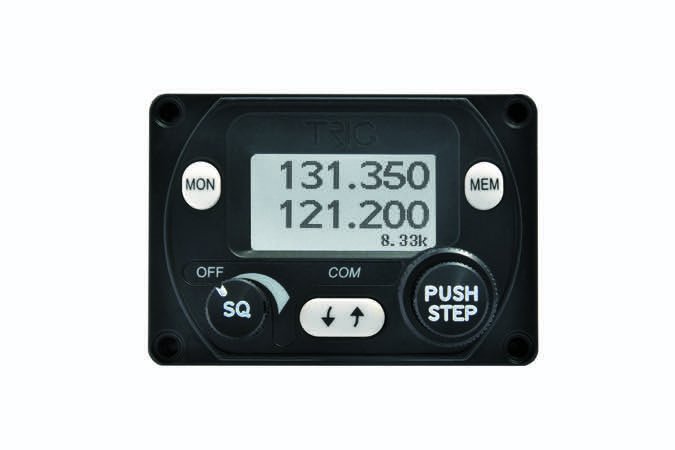
The radio can be wired for a two-place voice-activated intercom and the feature set includes a timer, plus an option for external frequency transfer with a yoke-mounted switch.
The A220 helps battle receiver noise with a function Icom calls ANL, for automatic noise limiter. This is internal filtering for stray noise that might work into the receiver. This might be some help in fabric aircraft where the VHF comm antenna has a marginal ground plane. It shouldn’t be used as a substitute for substandard wiring.
Speaking of wiring, the A220 can be connected with Garmin and BendixKing GPS receivers through an RS-232 serial port for loading in frequencies, based on position. Got fat fingers in turbulence? The radio has a dial and key lock so you don’t inadvertently tune it off frequency.
Icom offers a TSO’d version, which may not be required. We’ve seen the non-TSO A220 street priced as a low as $1100 and the TSO version around $1500. Contact www.icomamerica.com.
BENDIXKING, TKM
Once the king of all navcomms, the BendixKing KX155 (and KX165, which is compatible with mechanical HSI systems) is officially out of production. We still consider them good used market deals, but consider that replacement gas discharge displays—a common failure item—aren’t available. Instead, there’s an upgrade path that modifies the KX155/165 radio with an LED display, and the later KX155A/165A with LCD displays. It can run just north of $1500.
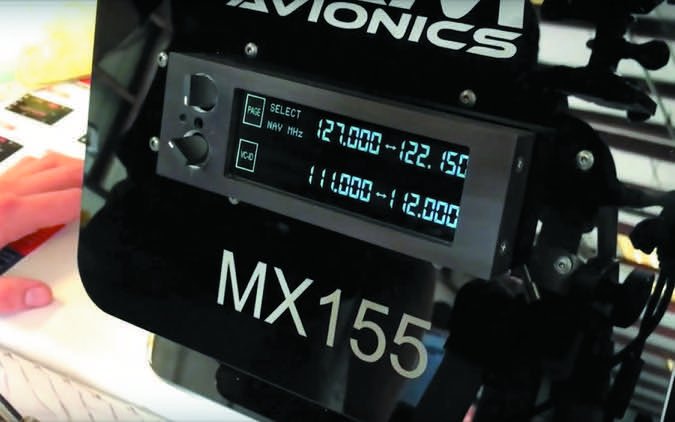
Another option is BendixKing’s KX155/165 factory refurbishment program. For $1750, you get the new display, new display lenses, a new bezel, control knobs and a one-year warranty. Despite recent rumors, there is still field support for repairs that may be needed for these radios.
If you don’t want to sink big money in an old KX155, TKM Avionics is working on the new MX155 navcomm, a digital plug-and-play replacement with modern processing and touchscreen. It’s expected later this fall in the $3000 price range and the company says aircraft owners can easily do the swap out and sign it off with a logbook entry. We’ll cover the MX155 and the updated line of TKM radios when the MX155 is certified.
As a primer: Based in Scottsdale, Arizona, the company was saved from the ashes a few years ago by a new buyer who invested big in updating the MX-series replacement radio line, which includes the MX300 for replacing old Cessna 300-series navcomms. The product line also includes models for replacing old Narco radios, including the MX11 and MX12.
TKM sells direct to customers, plus it’s building a dealer network. The idea of a plug-and-play radio upgrade isn’t new. The company sold over 37,000 of them over the years. Visit www.tkmavionics.com.
BendixKing still sells the KX155A/165A navcomms. The radios operate on 28 volts, so if you have a 14-volt electrical system, the installation will require a voltage converter. BendixKing recommended the Mid-Continent Instruments TC-series converters, which sell for around $900.
BendixKing still sells the “flatpack” standalone KN53 nav radio and KY197A (14-volt) and KY196A (28-volt) comm transceivers. Equipped with a glideslope receiver, the KN53 has a eye-widening price of $7290. The KY197A starts at $5990. Contact www.bendixking.com
More Space Savers: Val Avionics, Becker
While it gets little exposure, Salem, Oregon-based VAL Avionics has been in business for over 30 years and makes the COM 2000, which is plug-and-play compatible with the discontinued Garmin AT SL40 radio. It’s a slim radio that stands barely 1 inch tall and weighs 3.25 pounds.
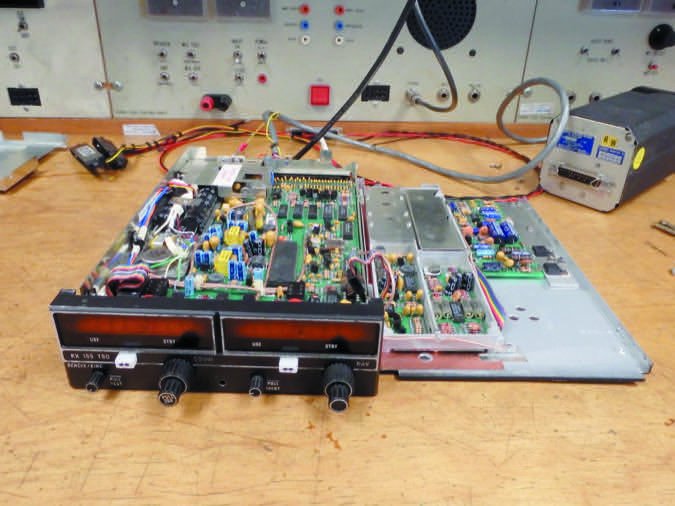
The COM 2000 has an 8-watt transmitter, 15-frequency storage bank with user-defined alphanumeric channel identifiers, plus it has an RS-232 serial port for communicating with experimental EFIS displays. The accompanying nav radio is the $1295 NAV 2000, which shares the same slim footprint as the COM 2000 and is equipped with a VOR and glideslope receiver. It’s also compatible with a variety of OBS indicators, including the BendixKing KI209 and Garmin GI106A/B.
Worth mentioning is VAL’s $1995 INS 429 integrated navigation system, which has a self-contained VHF nav receiver and electronic CDI. It fits in a standard 3-inch instrument cutout and is also compatible with a variety of GPS navigators. Contact www.valavionics.com.
As part of the Compact Line of products, which also includes a transponder, Becker sells the two-piece AR6201. With a blue-on-white LCD display, the radio transmits 6 watts of power in a 12-volt electrical system. It also has a four-place voice-activated intercom, entertainment input capability, plus a 99-frequency storage bank, which will automatically store the last nine frequencies used.
We like that the RT6201 (that’s the remote radio) supports two control heads, which may be useful in tandem-seat aircraft. It also has a scan mode, which monitors for chatter on the standby frequency. We found the radio advertised for around $1700, which we think is a decent value. Contact www.beckerusa.com.
Product | Typical Retail | Receiver | Comments |
BENDIXKING KX165A BENDIXKING KX155A | $5990 $5500 | VHF comm, nav and glideslope. | Earlier-generation KX155 discontinued. |
BENDIXKING KY196A BENDIXKING KY197A | $5590 $5990 | VHF comm. | Standalone flat-pack comm radios that differ by input voltage. |
BENDIXKING KN53 | $7290 | VHF nav. | Standalone version of the KX155, with built-in glideslope. |
BECKER AR6201 | $1700 | VHF comm. | Two-piece radio, compact. |
GARMIN GNC255 | $4495 | VHF comm, nav and glideslope. | Advanced feature set including frequency and facility database, plus databus for GPS interface. |
Garmin GTR225 | $1995 | VHF comm. | Comm-only version of the GNC255. |
ICOM IC-A220 | $1100 non-TSO $1500 TSO’d | VHF comm, NOAA Weather. | Generous feature set, high-quality display, low price. |
PS ENGINEERING PAR200A | $2995 | Remote VHF comm via Trig TY91 or TY92. | Combines audio control, four-seat intercom and VHF comm control in one console. |
TKM MX155 | TBD | VHF comm, nav and glideslope. | Designed as a plug-and-play replacement for the KX155. Expected Fall 2017. |
TRIG TY92/91 TRIG TY97/96 | $2999/$1325 $2699/$1998 | VHF comm. VHF comm. | TY91/92 are remote mounted and the TY97/96 are stack mounted. |
VAL COM 2000 VAL NAV 2000 VAL INS 429 | $1125 $1295 $1995 | VHF comm. VHF nav. VHF nav. | Slim footprint, budget priced. COM 2000 is plug-and-play with SL40 comm radio. |
A Bit On Performance
Keep in mind that none of the radios we cover here will provide acceptable performance without healthy antenna systems, which also includes the coaxial cable and connectors. If the aircraft hasn’t seen an avionics upgrade in a while, you should plan on a complete rewiring job and be pleasantly surprised if the shop thinks the old wiring is good enough for flawless performance. That doesn’t happen often.
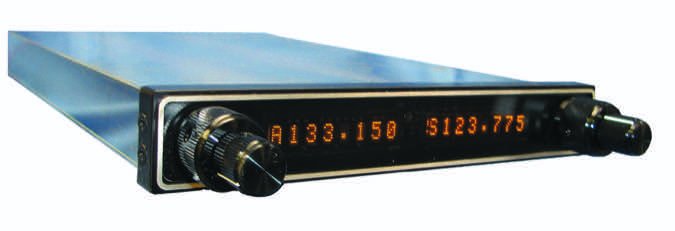
Comm and navigation antenna replacement can get into some money, especially on pressurized and fabric-covered aircraft. As we’ve discussed in previous technical articles, you can often judge the health of a VHF antenna by eyeballing it. You’ll know when an antenna has reached the end of its life when the fiberglass’s coating wears off, revealing a brownish core and perhaps sizable cracks and peeling in the fiberglass itself. Nav antennas live especially tough lives since they’re often installed at the top of the vertical tail in a fairing where they build corrosion. They might also connect to signal splitters to feed more than one nav receiver. They can deteriorate.
A symptom common to worn comm antennas is scratchy background noise in the radio receiver. Transmit and receive range might suffer as well. Our advice is to troubleshoot first before shotgunning radios.
While any of the equipment covered here will get the job done, our top pick is Garmin’s GNC255 if you need a full-up navcomm. We think it has enough features and new technology to justify its price. For basic panels needing an intercom upgrade and a new comm, we think PS Engineering’s integrated PAR200A is a solid value that saves panel space.
Which NAV Display Will Play?
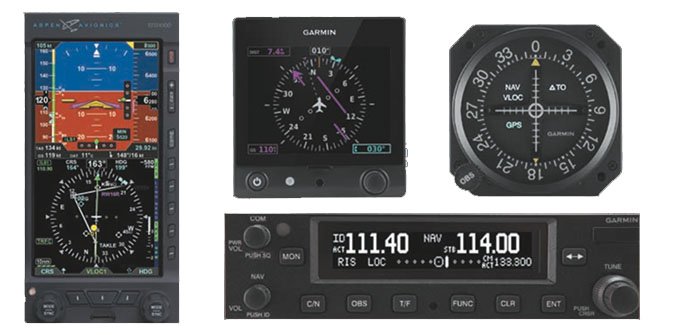
Before EFIS, navcomm installations were straightforward. Simply wire to the OBS indicator or for advanced panels, connect to an analog HSI like a King KCS55A or Century NSD360. These days, retrofit EFIS—especially new ones like Garmin’s G5—have digital databuses that might not be readily compatible with analog nav receivers. This could have you rethinking your upgrade strategy if you’re sourcing an older radio on the used market. Some navcomms might share a mechanical CDI with a GPS, using external switching relays. EFIS installations are much cleaner because all of the switching is handled digitally, without external relays and mode source switches. But the software has to be compatible.
Aspen Avionics made the upgrade process easy early on when it designed the Evolution retrofit PFD. While the display doesn’t accommodate analog nav signal inputs directly, its optional external ACU (analog converter unit) converts raw analog data to a digital format. This is what makes traditional radios like the KX155, for example, Aspen compatible.
Garmin’s recently introduced G5 directional instrument with EHSI doesn’t have an external converter for analog nav input. Instead, it connects directly with Garmin’s own GNC255 navcomm, plus the discontinued Garmin AT SL30 radio over a digital databus. Since it can’t receive analog nav data, it’s not compatible with vintage radios including the BendixKing KX155 or the current KX155A. That technical snag misses a sizable chunk of the budget upgrade market, in our estimation. The G5 will work with all vintages of the GNS430 and 530, plus the current GTN650 and 750 navigators because they can be wired in directly over the digital bus.
If you don’t have EFIS at all, Garmin’s GI-106B (and older GI-106A) is fully compatible with the GNC255. Of course, ditch the nav altogether and compatibility isn’t an issue.

